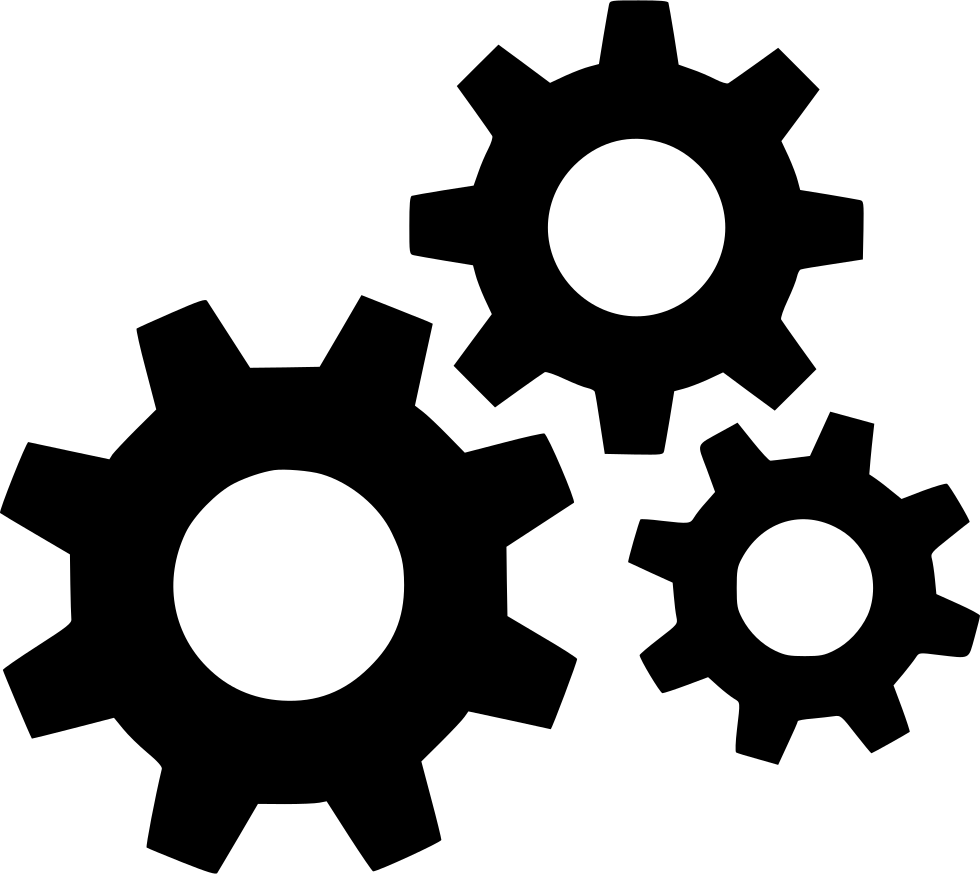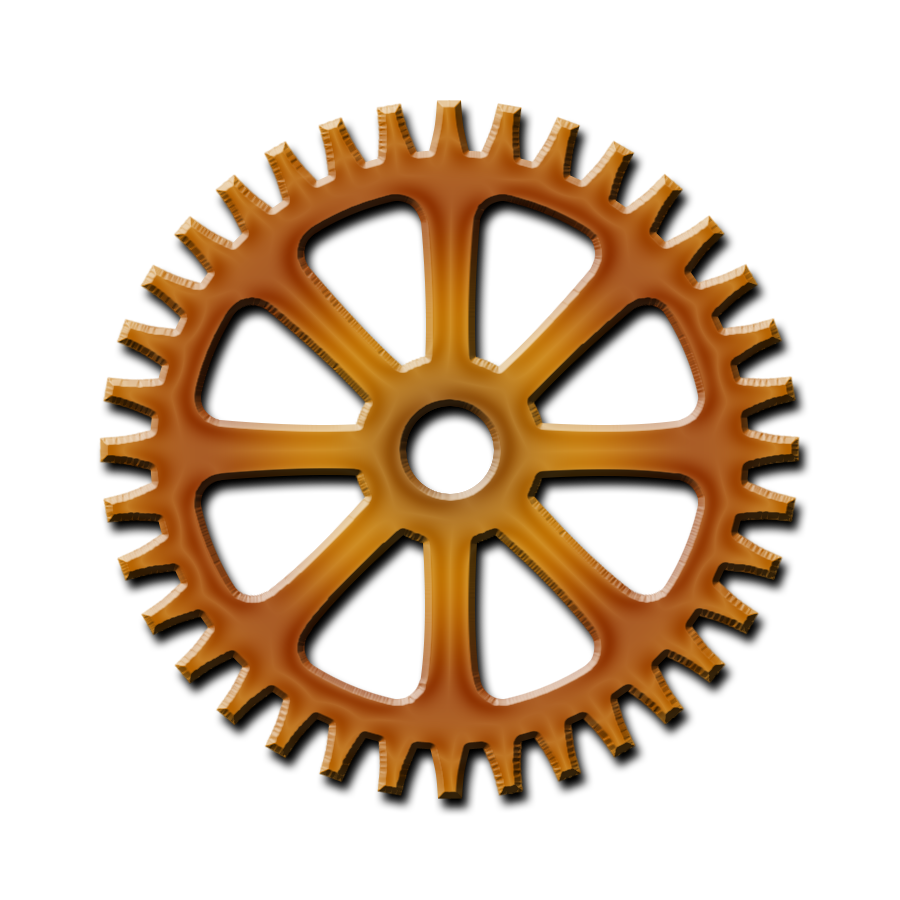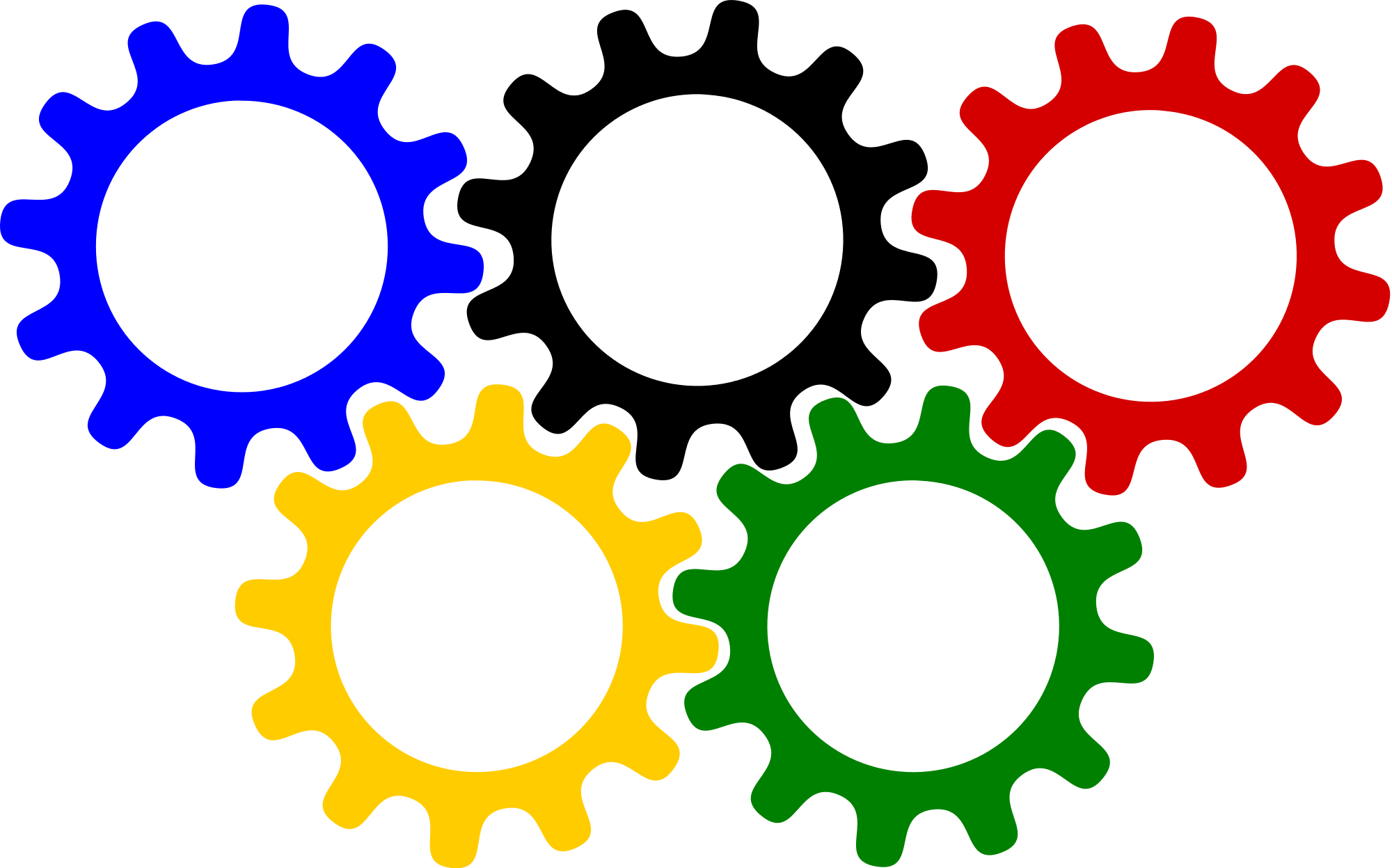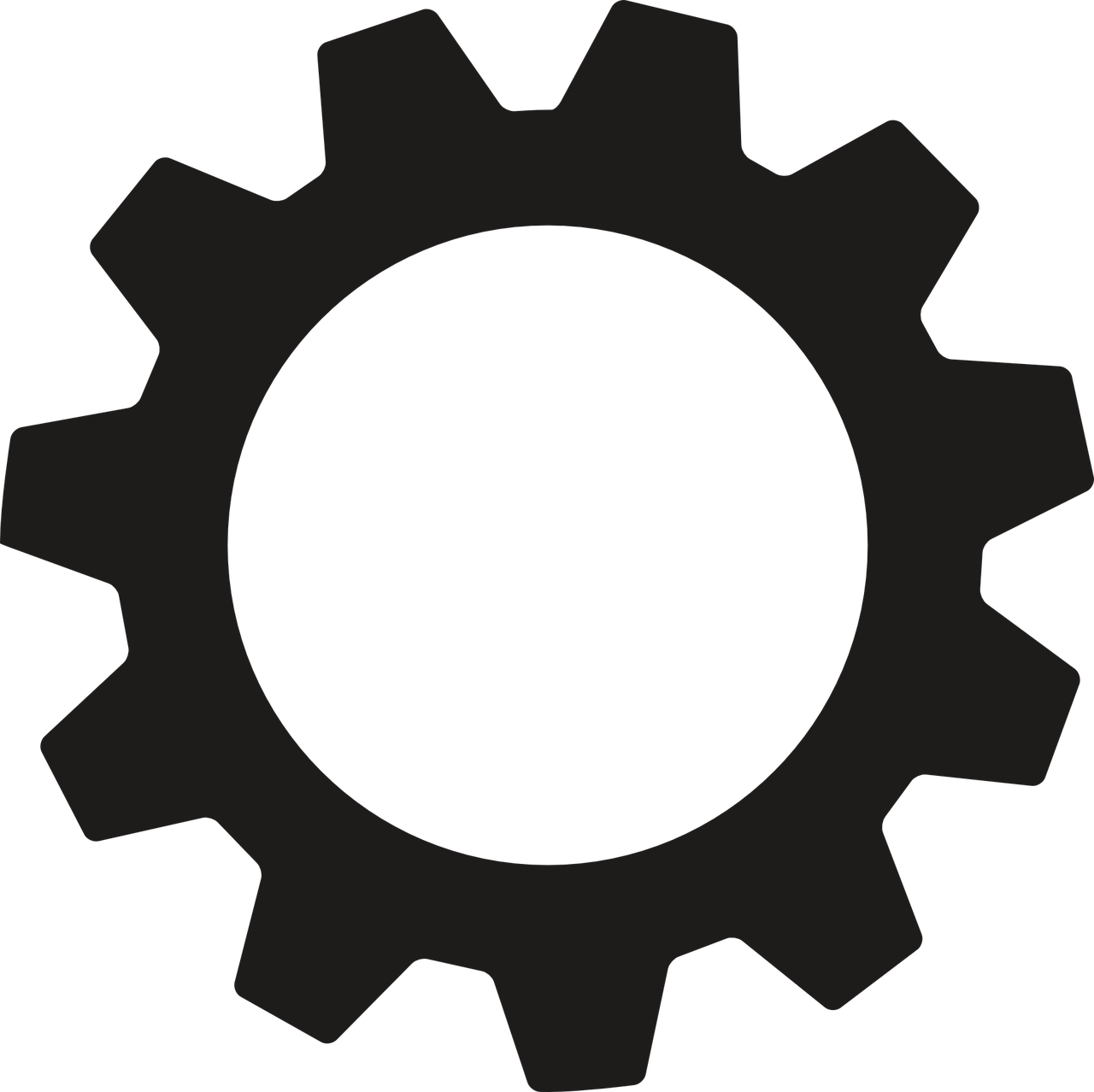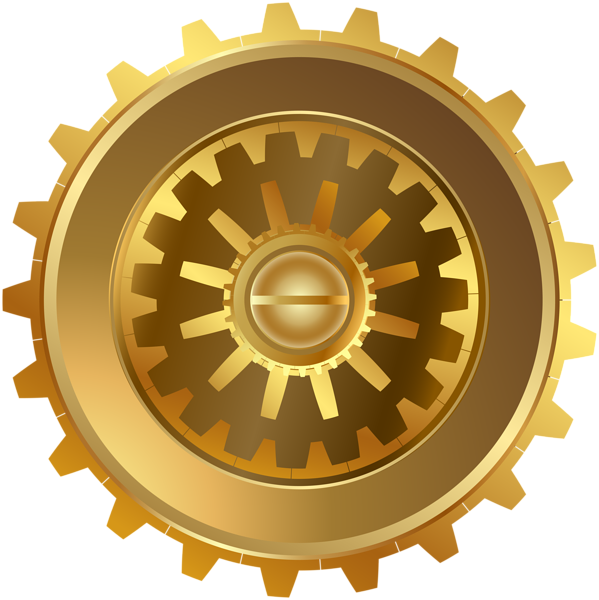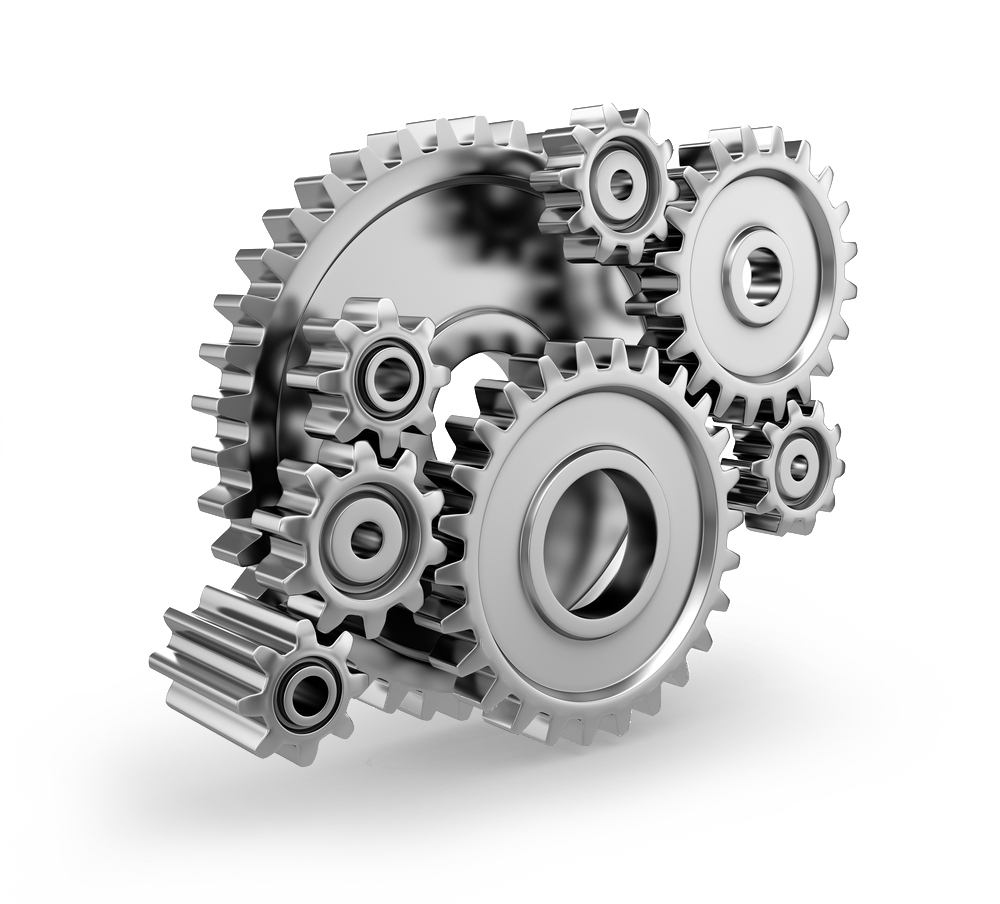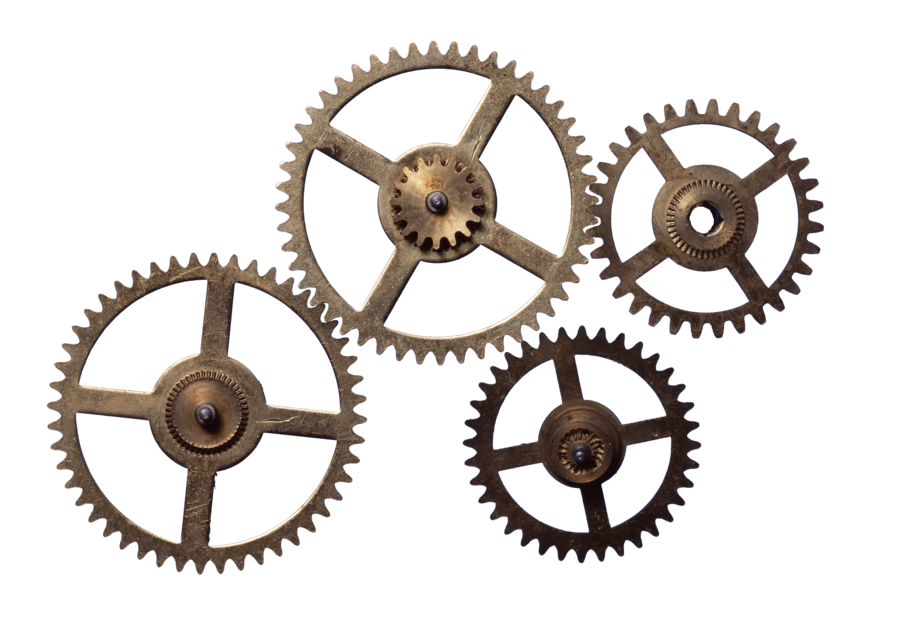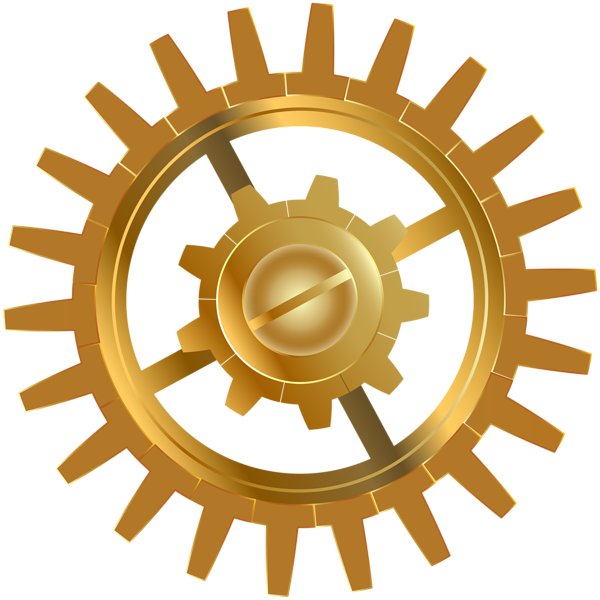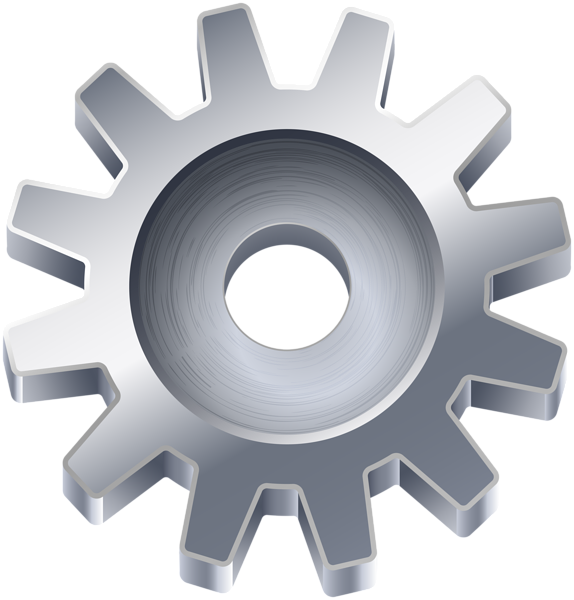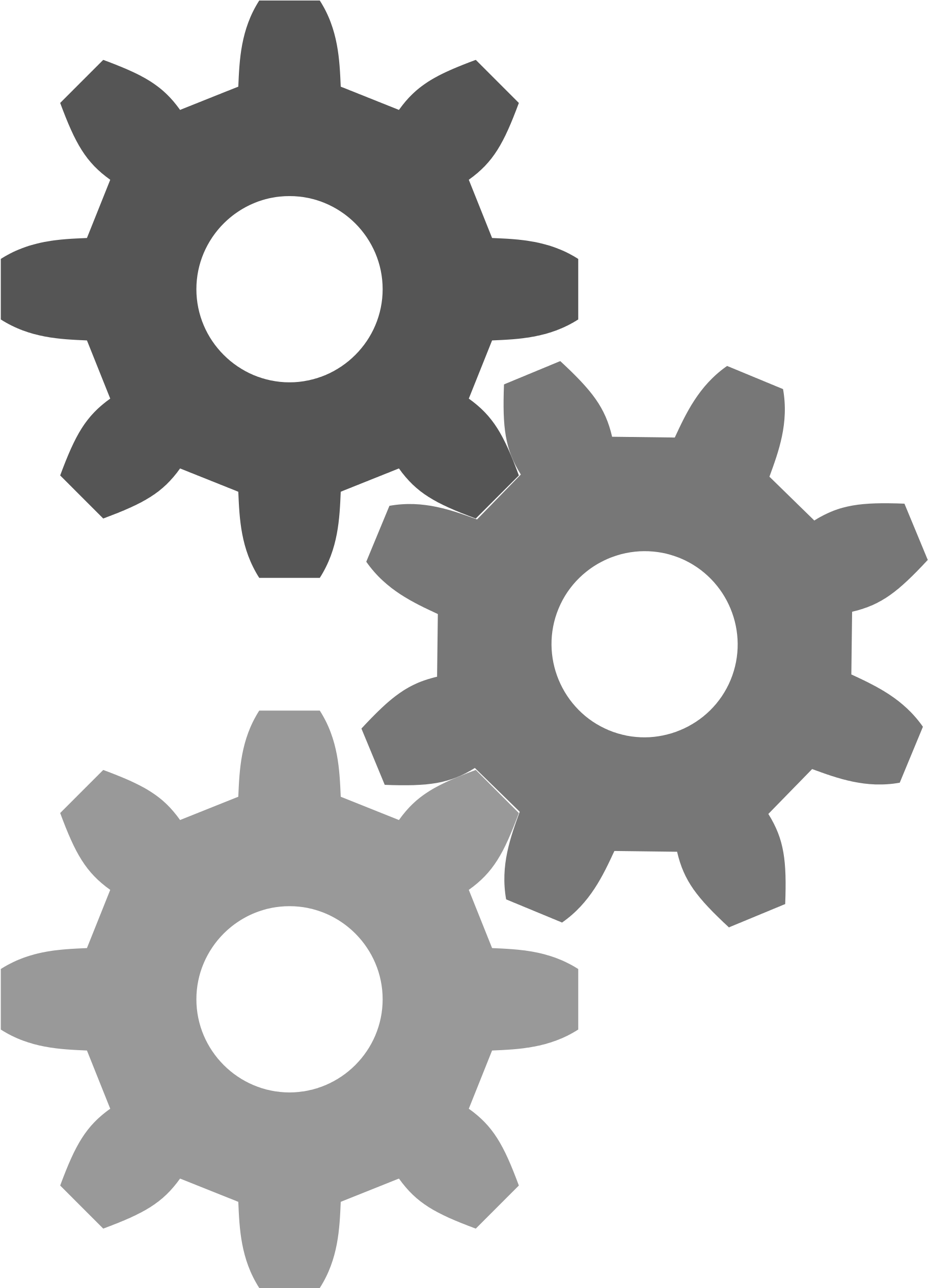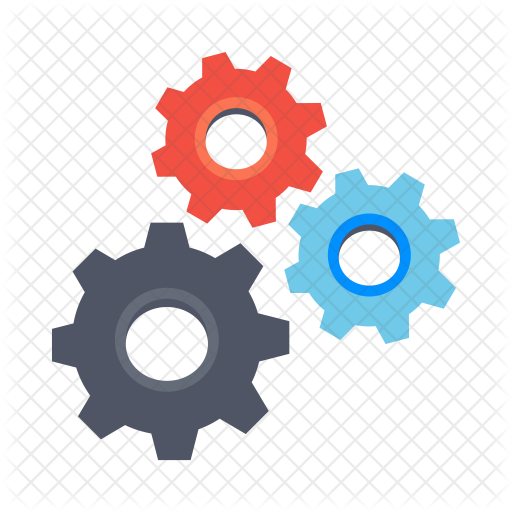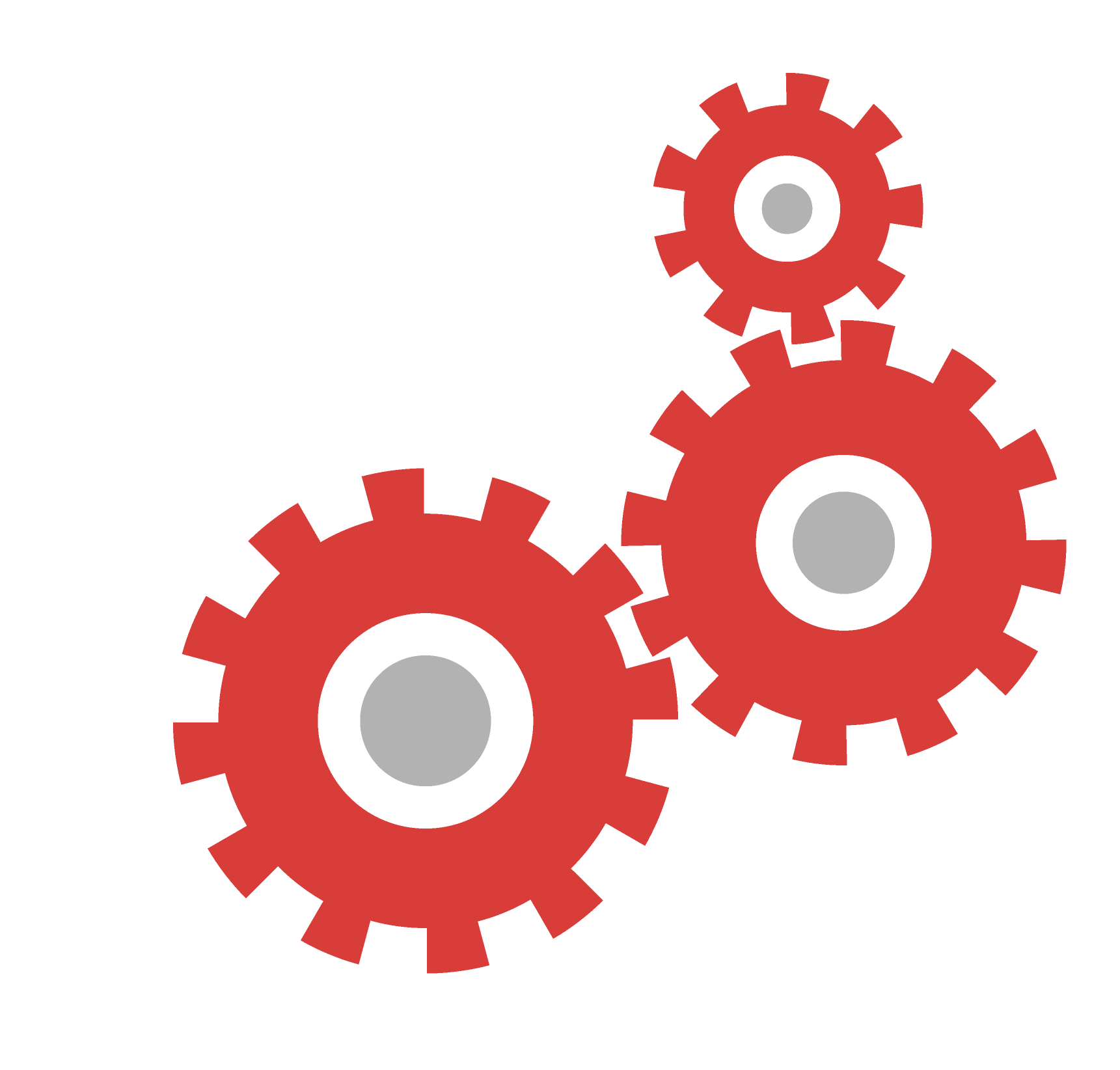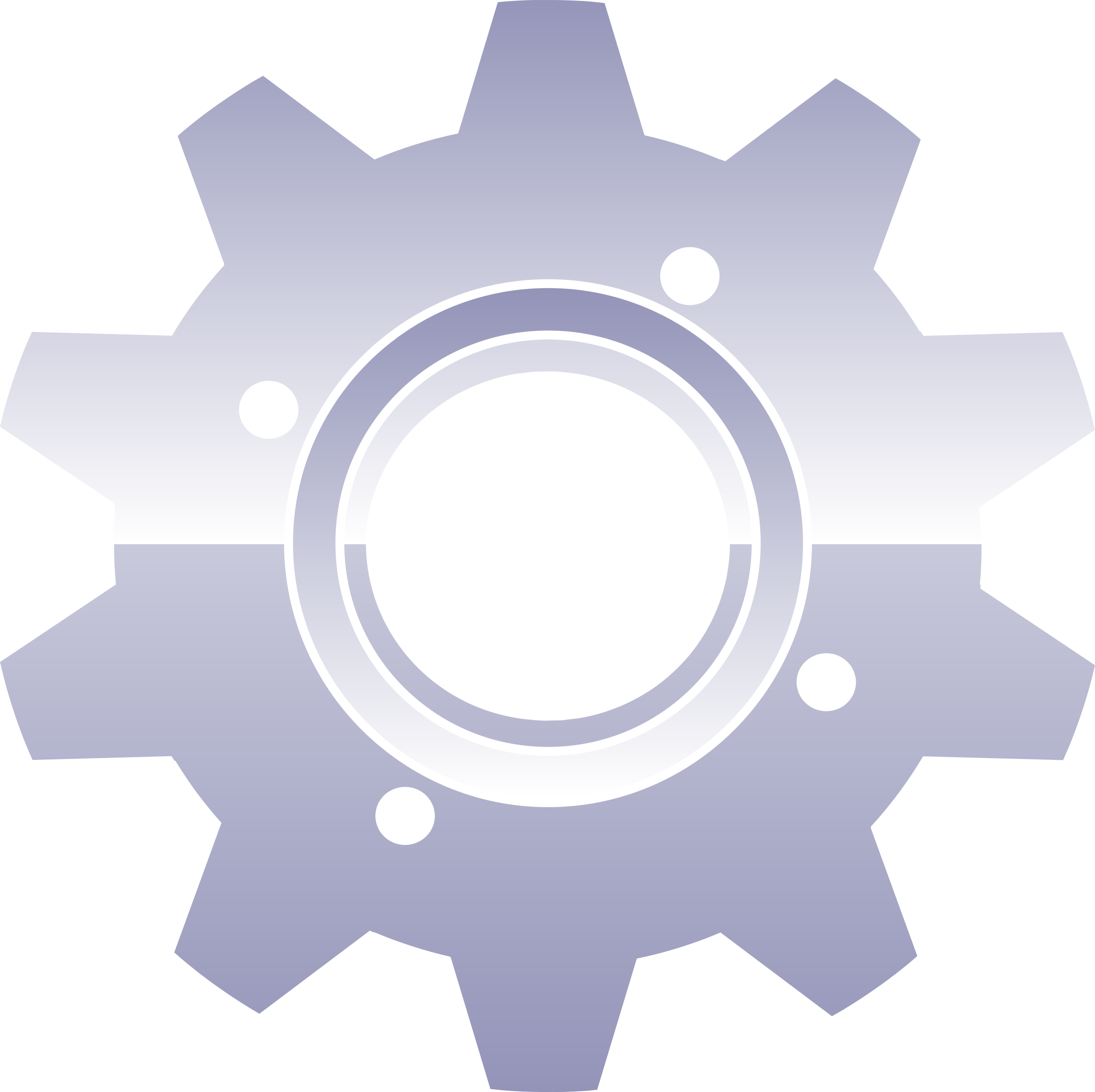Download top and best high-quality free Gears PNG Transparent Images backgrounds available in various sizes. To view the full PNG size resolution click on any of the below image thumbnail.
License Info: Creative Commons 4.0 BY-NC
A gear is a spinning circular machine element with cut teeth, or inserted teeth (called cogs) in the case of a cogwheel or gearwheel, that mesh with another (suitable) toothed part to transmit (convert) torque and speed. The basic theory of gear action is similar to the basic principle of lever operation. A gear is sometimes referred as a cog colloquially. Geared devices may adjust a power source’s speed, torque, and direction. Through their gear ratio, different-sized gears cause a difference in torque, producing a mechanical advantage, and so may be called a basic machine. Two meshing gears have different rotational speeds and torques in proportion to their diameters. The teeth on both meshing gears are identical in form.
A gear train or transmission is a set of two or more meshing gears that function in a specific order. The wheels in a crossing, belt pulley system are equivalent to the gears of a gearbox. The teeth of a gear prevent slippage, which is a benefit of gears. The phrase “gear” (e.g., “first gear”) refers to a gear ratio rather than a physical gear in transmissions having several gear ratios, such as bicycles, motorcycles, and vehicles. Even when the gear ratio is continuous rather than discrete, or when the device does not contain gears, as in a continuously variable transmission, the word describes comparable technologies.
A gear can also mesh with a linear toothed element called a rack to provide translation rather than rotation.
Early specimens of gears have been preserved in the Luoyang Museum in Henan Province, China, dating from the 4th century BC (Zhan Guo times ” Late East Zhou dynasty). The Antikythera mechanism, an example of a very early and sophisticated geared system meant to compute astronomical locations, was discovered to have the earliest intact gears in Europe. It was built between 150 and 100 BC, according to current estimates. Gears first appear in writings associated with Hero of Alexandria around AD 50 in Roman Egypt, although they may be traced back to the Alexandrian school of mechanics in 3rd-century BC Ptolemaic Egypt, where they were considerably refined by the Greek polymath Archimedes (287″212 BC).
In 1206 Arab engineer Al-Jazari devised the segmental gear, which receives/communicates reciprocating motion from/to a cogwheel, consisting of a sector of a circular gear/ring with cogs on the circumference. The worm gear was created in the 13th”14th century in the Indian subcontinent for use in roller cotton gins. Differential gears may have been employed in certain Chinese south-pointing chariots, but the British clockmaker Joseph Williamson utilized them for the first time in 1720.
The term gear is most likely derived from Old Norse grvi (plural grvar) ‘apparel, gear,’ which is linked to gra, grva ‘to produce, construct, build; place in order, prepare,’ an Old Norse verb “used in a broad range of contexts from producing a book to dressing meat.” The term ‘toothed wheel in machinery’ was initially used in the 1520s; the mechanical sense of ‘components by which a motor communicates motion’ dates from 1814; and the particular sense of a vehicle (bicycle, automobile, etc.) dates from 1888.
Download Gears PNG images transparent gallery.
- Gears PNG Image File
Resolution: 1337 × 863
Size: 17 KB
Image Format: .png
Download
- Gears PNG Image HD
Resolution: 980 × 874
Size: 60 KB
Image Format: .png
Download
- Gears PNG Image
Resolution: 900 × 900
Size: 539 KB
Image Format: .png
Download
- Gears PNG Images HD
Resolution: 2000 × 1247
Size: 132 KB
Image Format: .png
Download
- Gears PNG Images
Resolution: 1280 × 1278
Size: 100 KB
Image Format: .png
Download
- Gears PNG Photo
Resolution: 599 × 600
Size: 233 KB
Image Format: .png
Download
- Gears PNG Photos
Resolution: 600 × 265
Size: 113 KB
Image Format: .png
Download
- Gears PNG Pic
Resolution: 1000 × 904
Size: 480 KB
Image Format: .png
Download
- Gears PNG Picture
Resolution: 998 × 591
Size: 68 KB
Image Format: .png
Download
- Gears PNG
Resolution: 900 × 639
Size: 410 KB
Image Format: .png
Download
- Gears Transparent
Resolution: 600 × 600
Size: 184 KB
Image Format: .png
Download
- Gears
Resolution: 574 × 600
Size: 205 KB
Image Format: .png
Download
- Gears Background PNG
Resolution: 7322 × 5774
Size: 2124 KB
Image Format: .png
Download
- Gears No Background
Resolution: 481 × 341
Size: 15 KB
Image Format: .png
Download
- Gears PNG Background
Resolution: 1822 × 2529
Size: 103 KB
Image Format: .png
Download
- Gears PNG Clipart
Resolution: 512 × 512
Size: 99 KB
Image Format: .png
Download
- Gears PNG Cutout
Resolution: 512 × 512
Size: 61 KB
Image Format: .png
Download
- Gears PNG File
Resolution: 1721 × 1644
Size: 51 KB
Image Format: .png
Download
- Gears PNG Free Image
Resolution: 1236 × 1073
Size: 35 KB
Image Format: .png
Download
- Gears PNG HD Image
Resolution: 2407 × 2400
Size: 161 KB
Image Format: .png
Download

